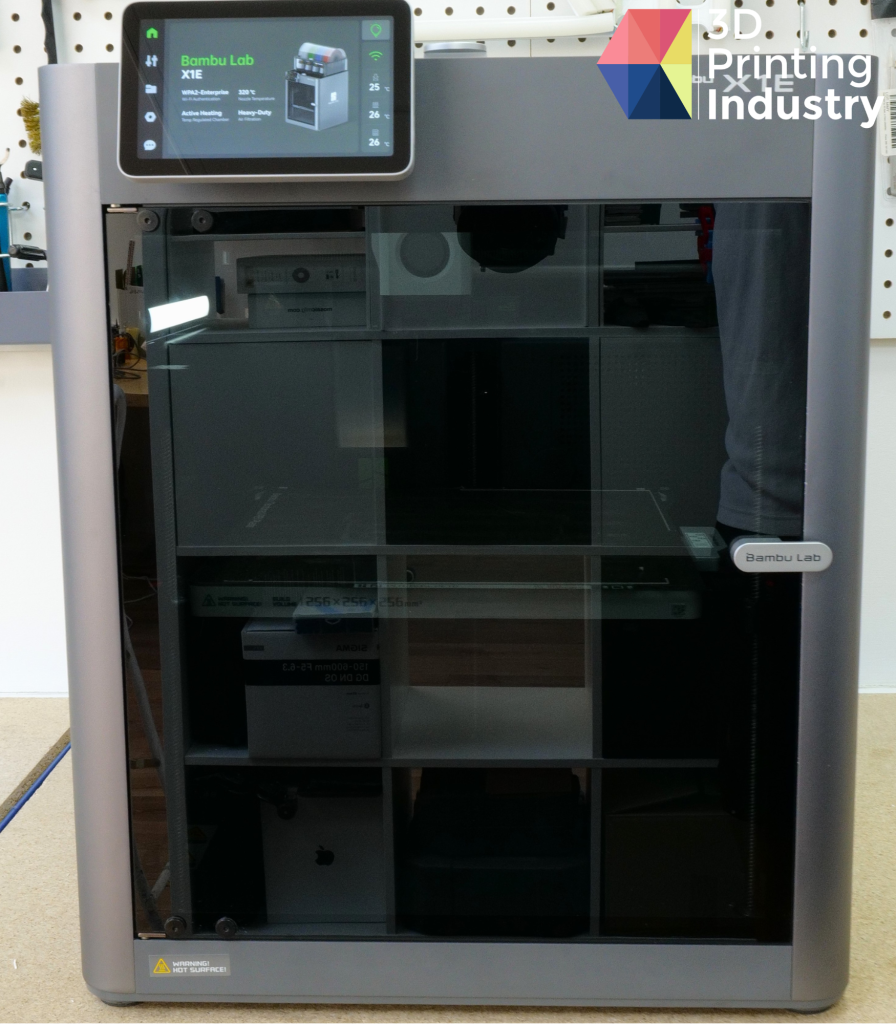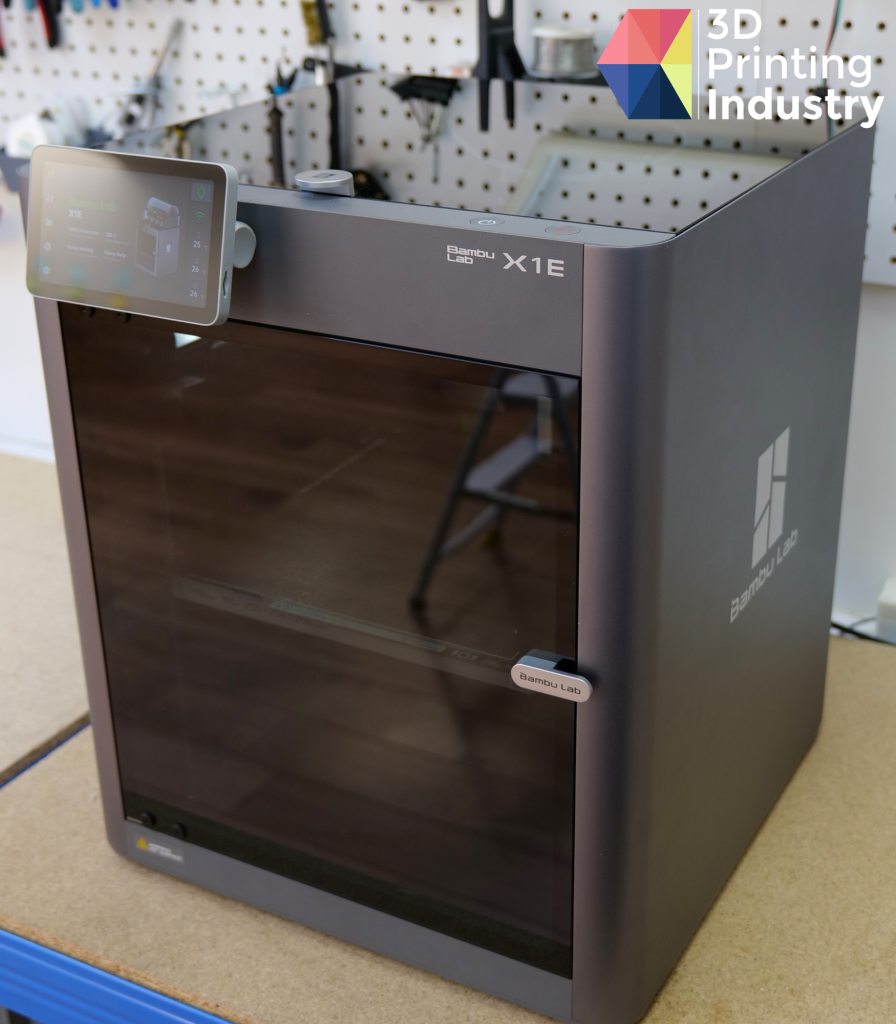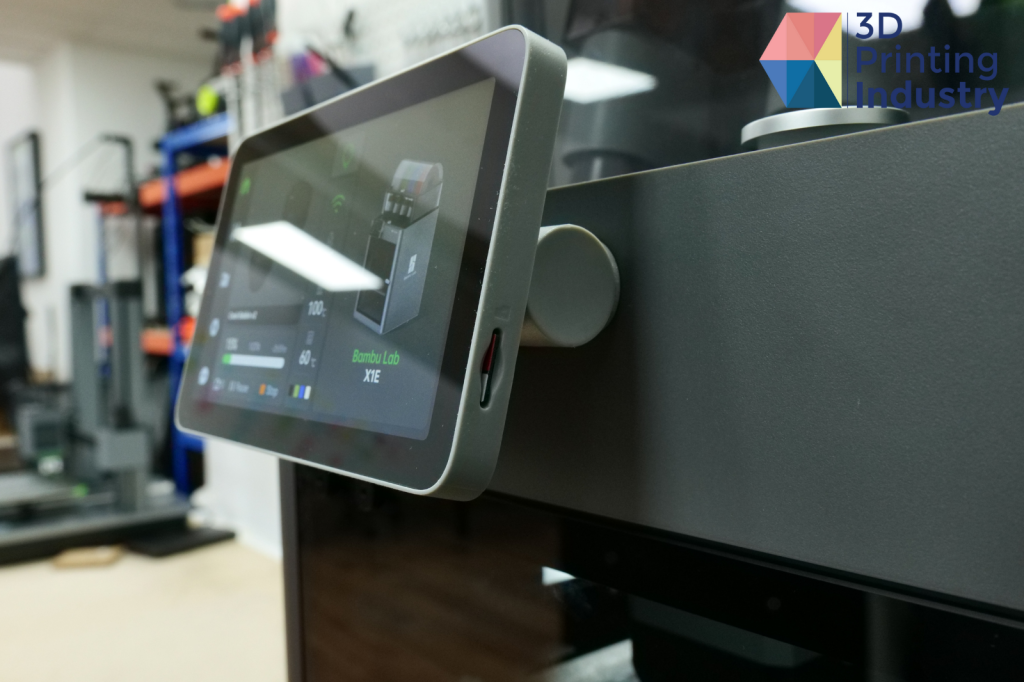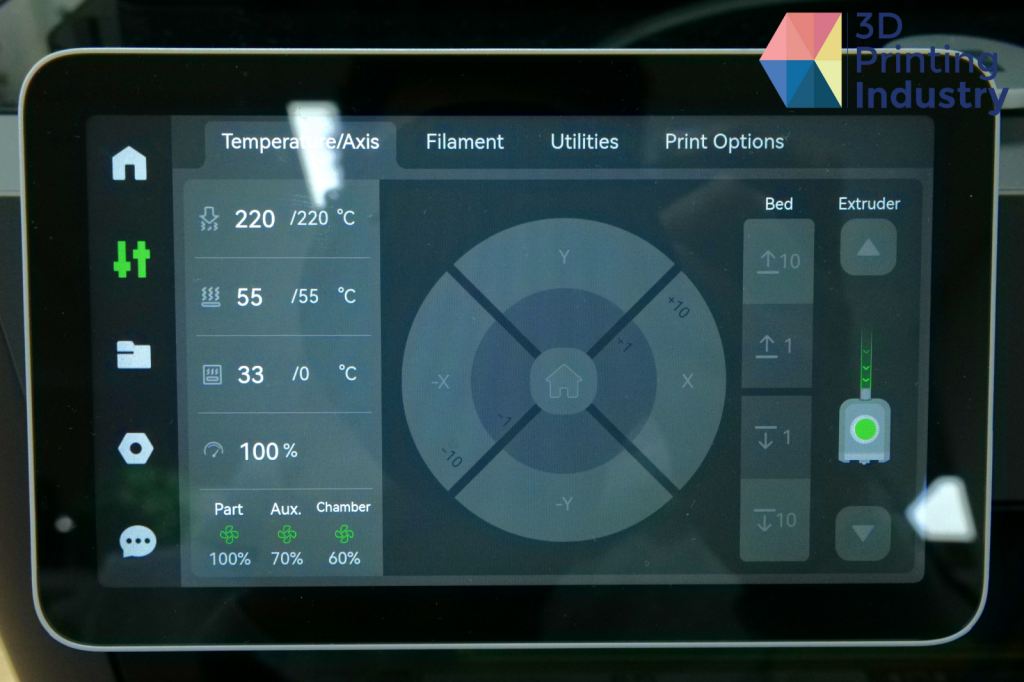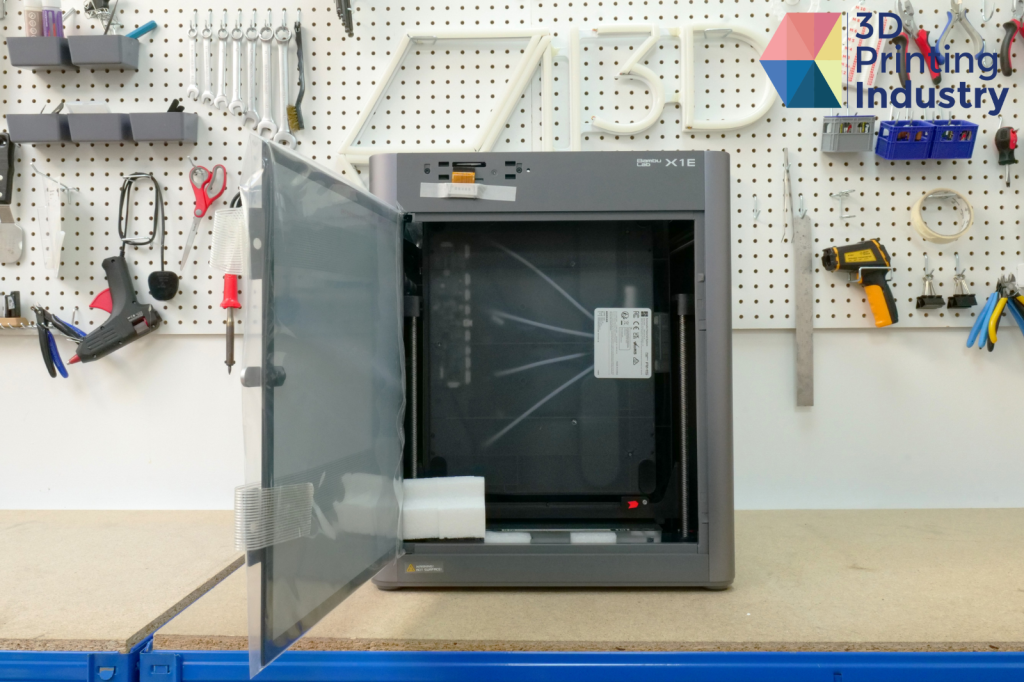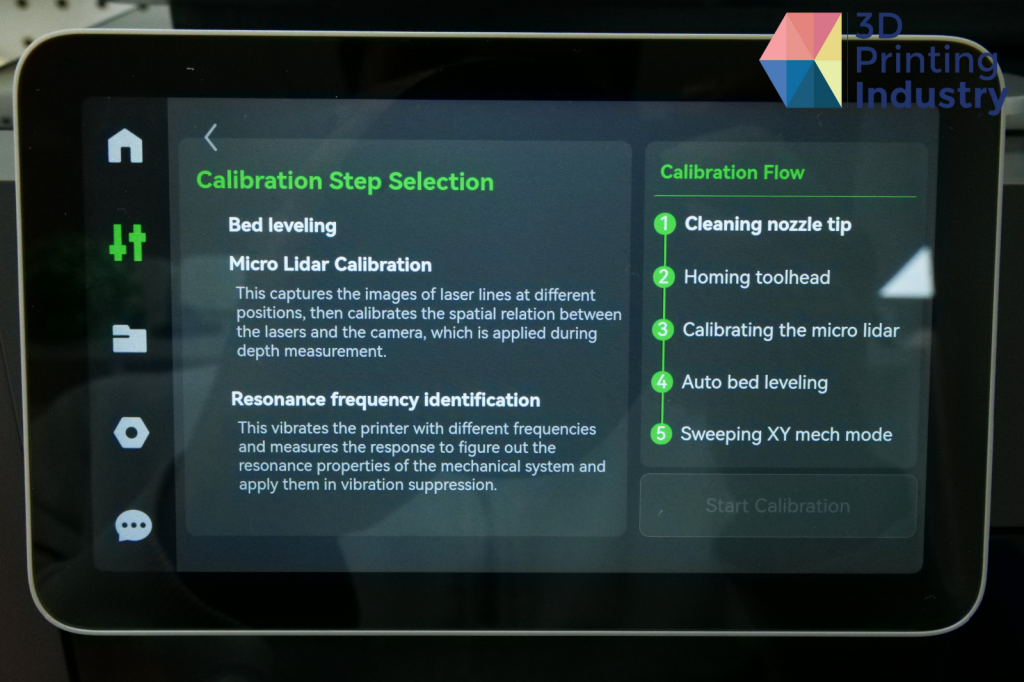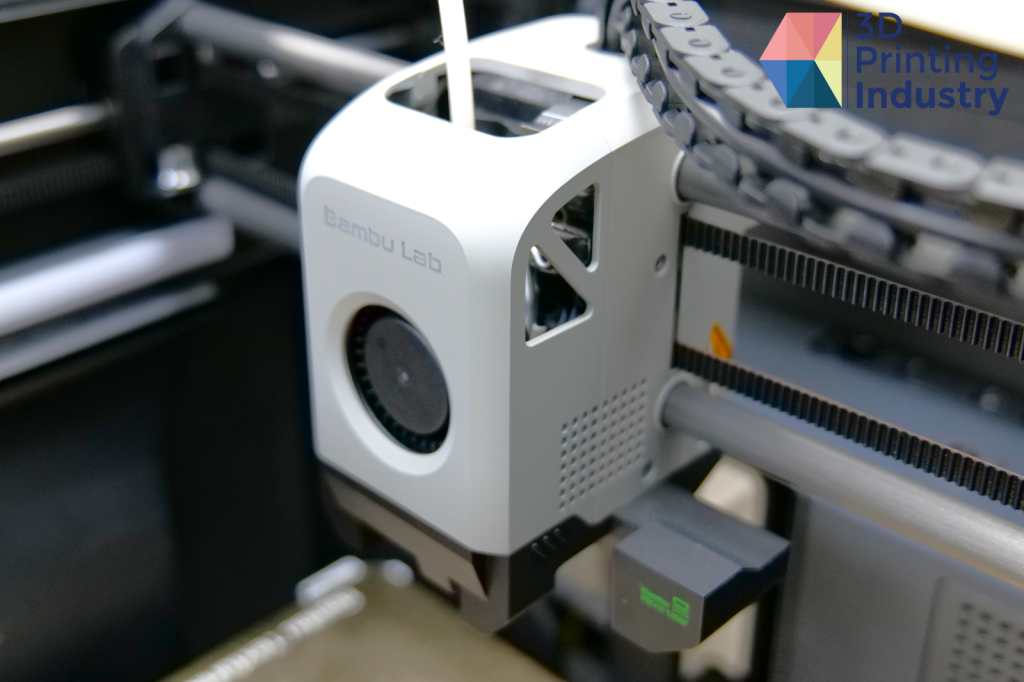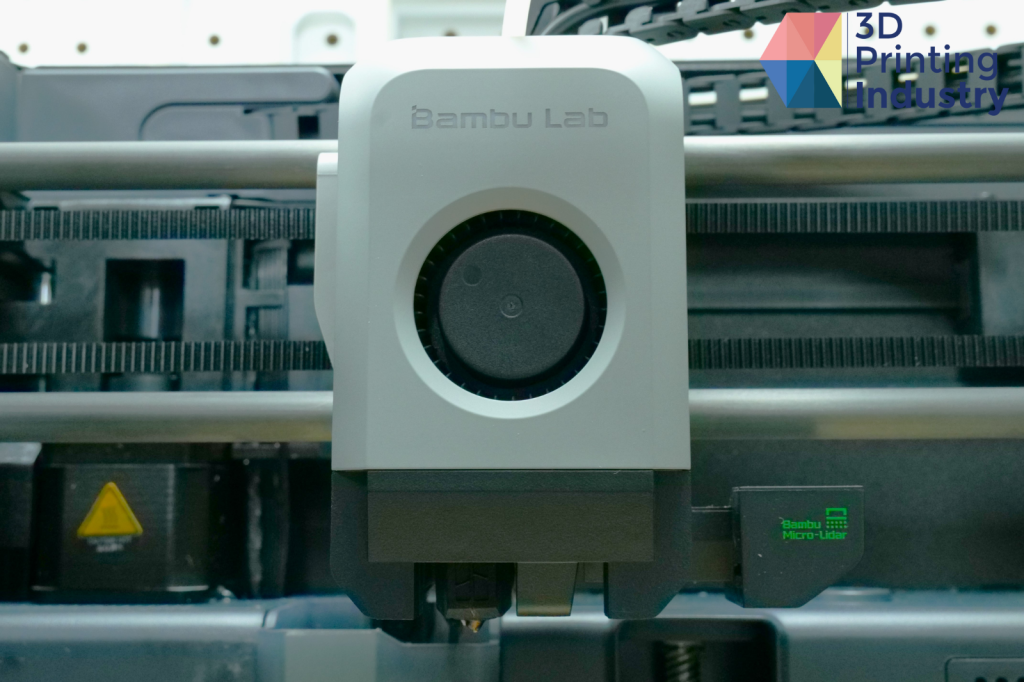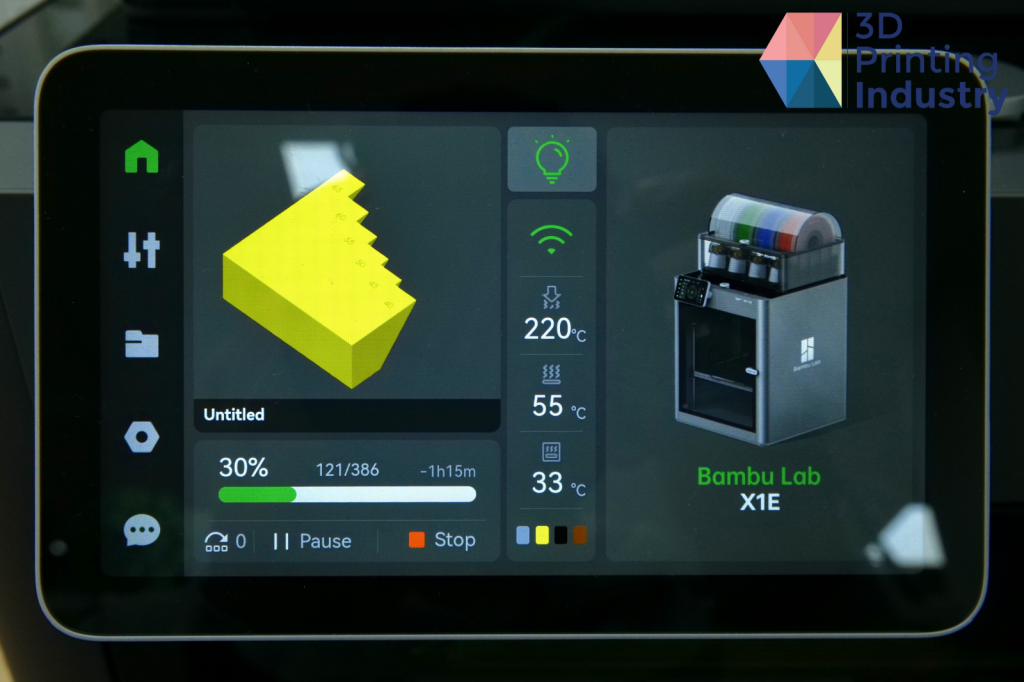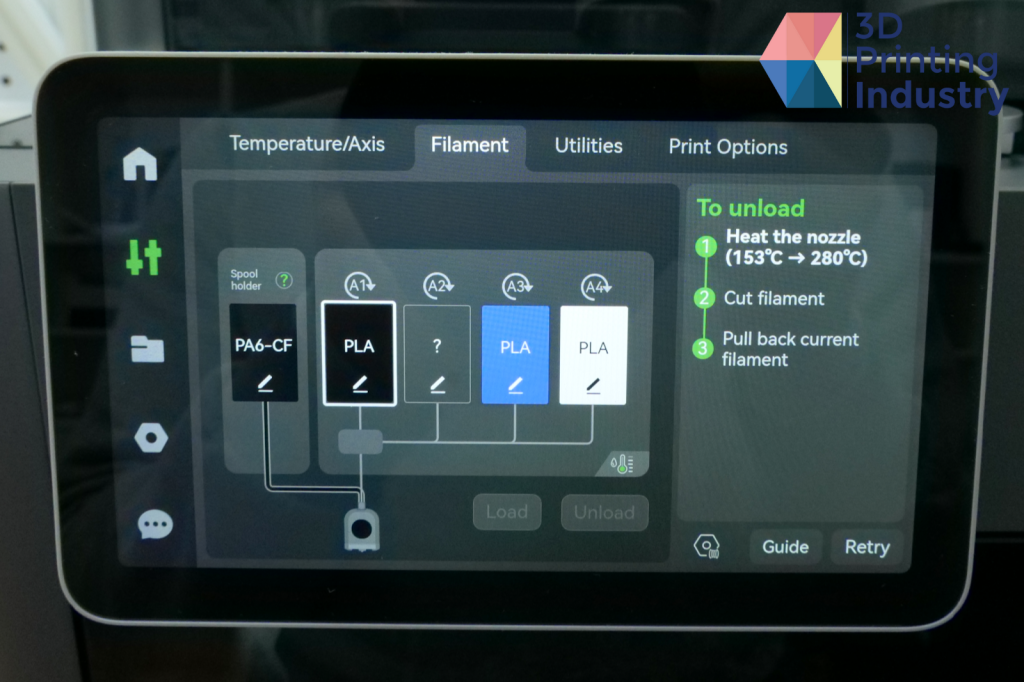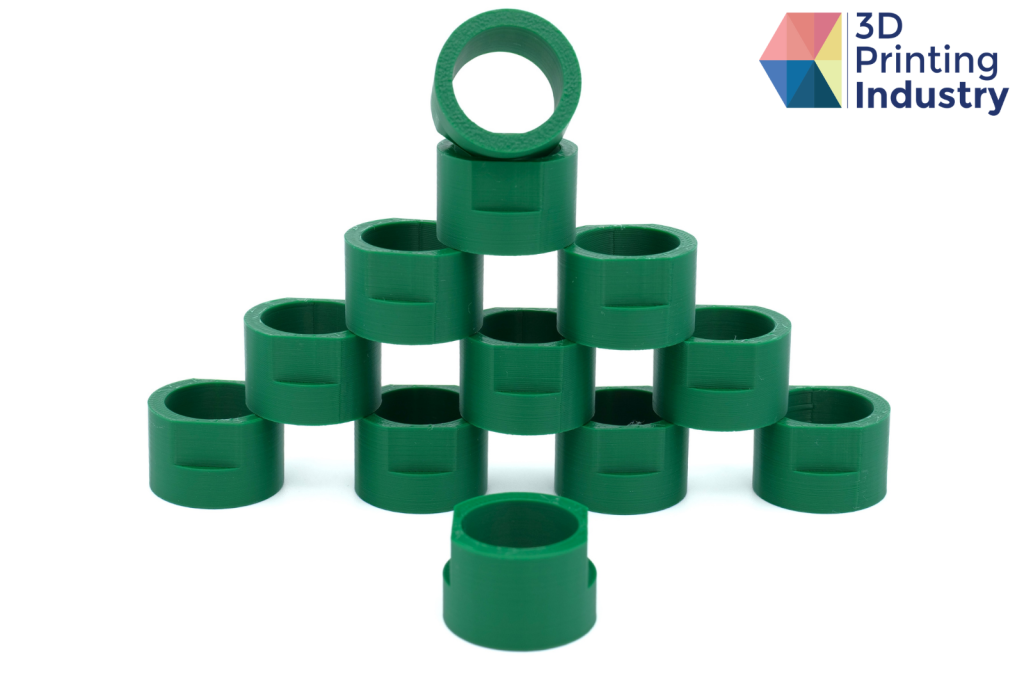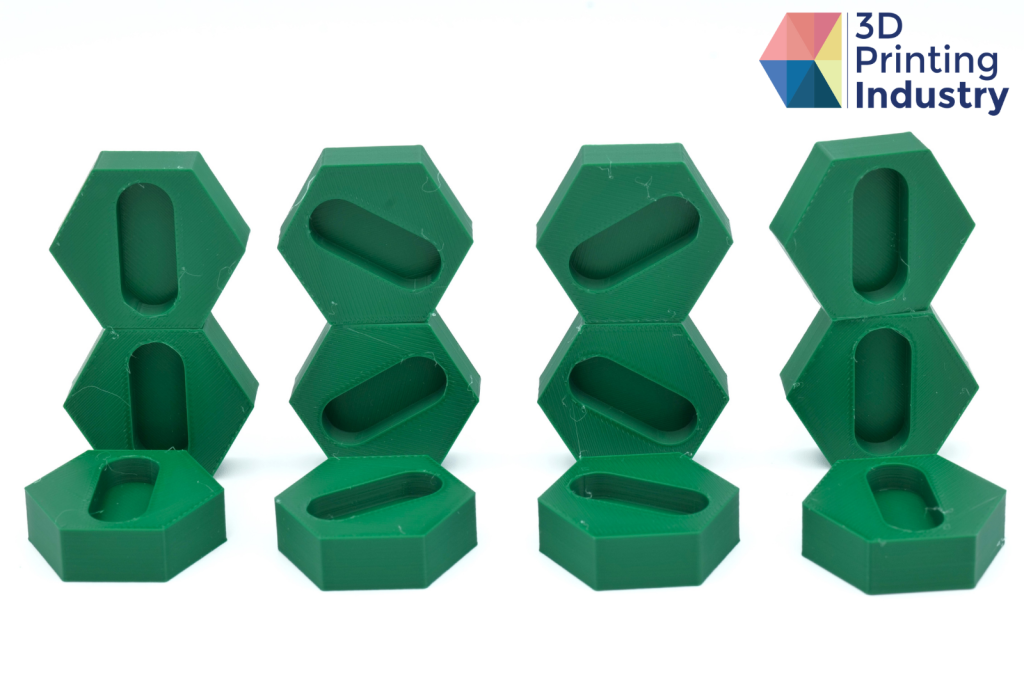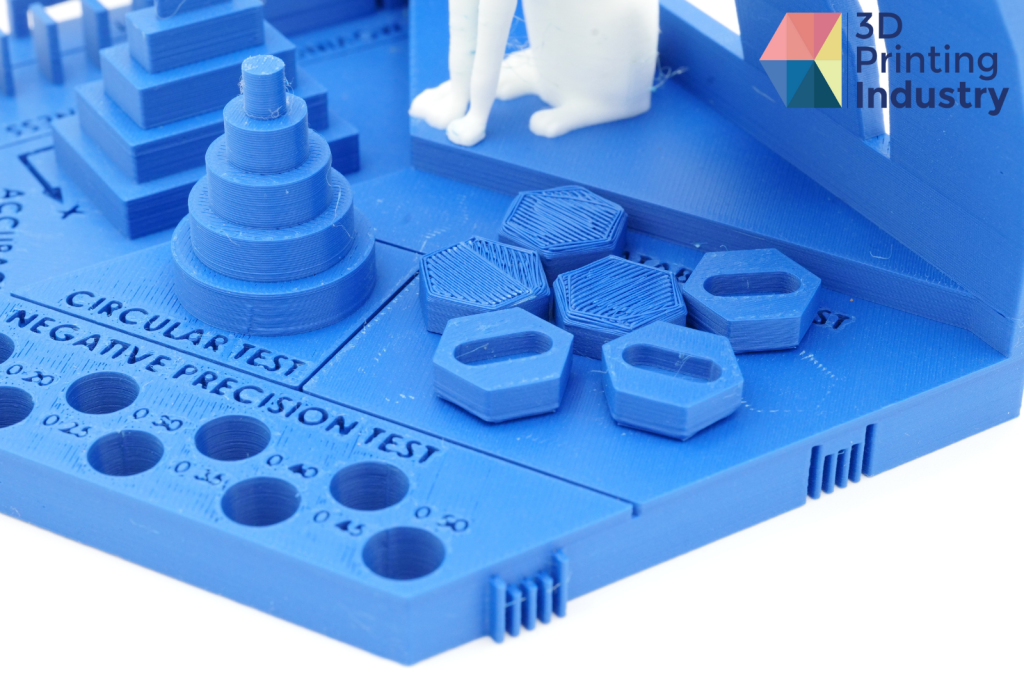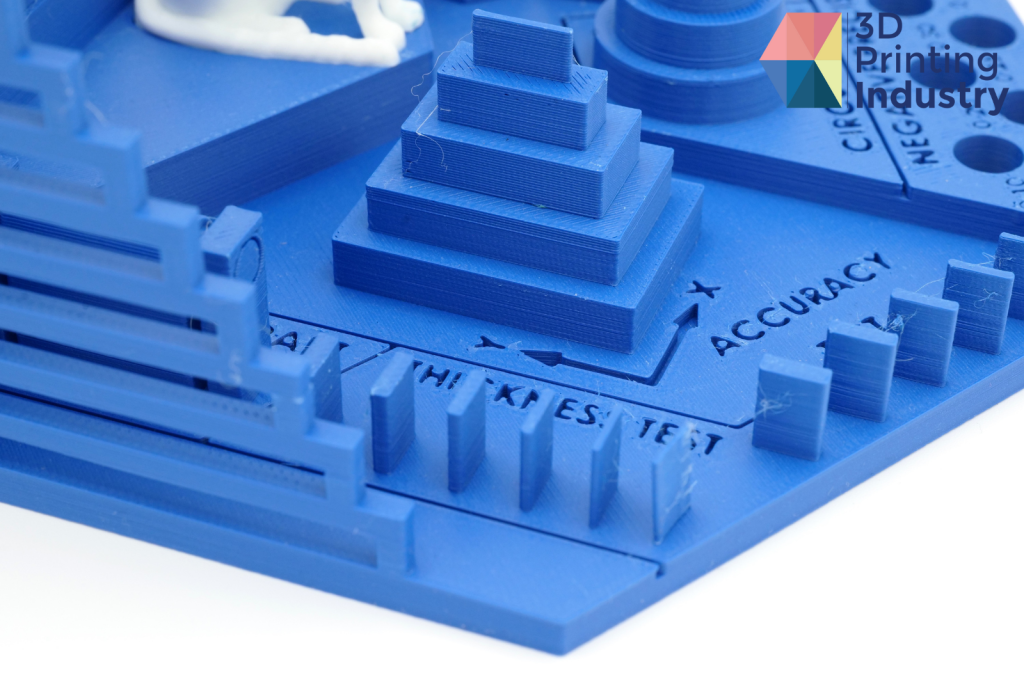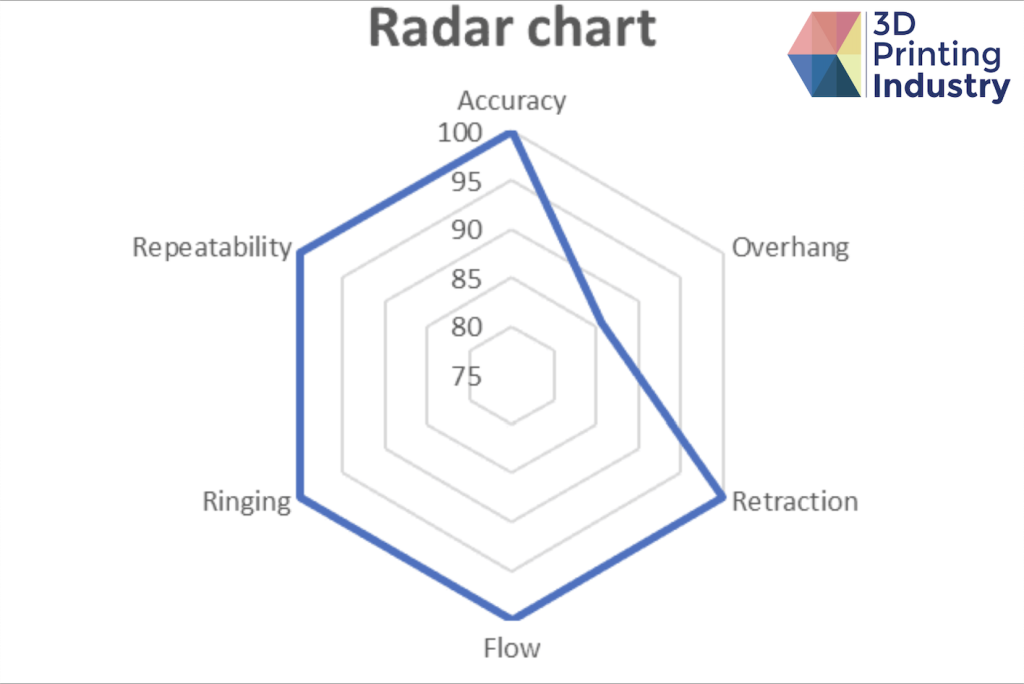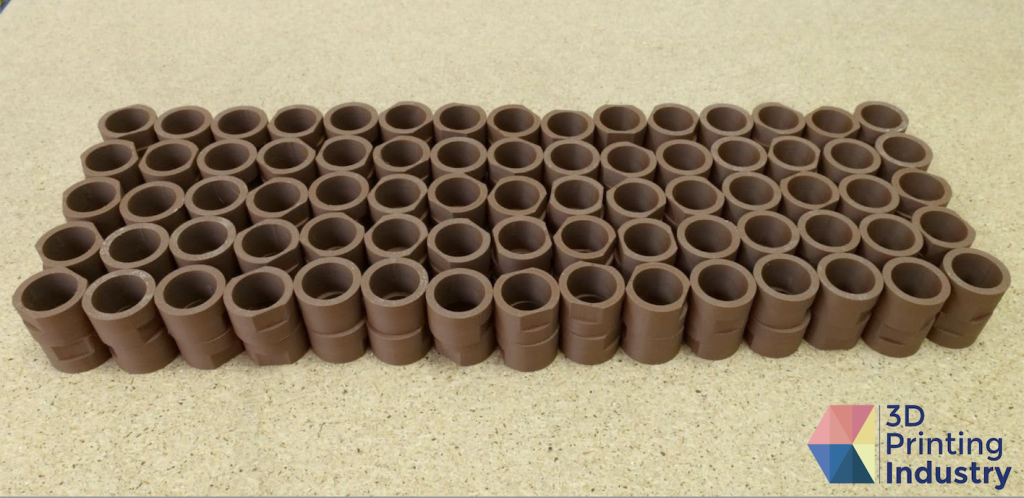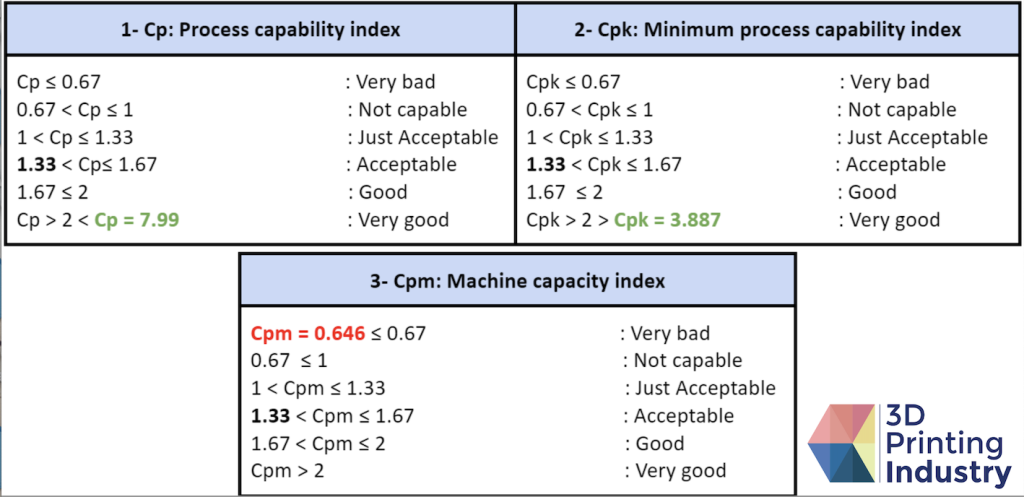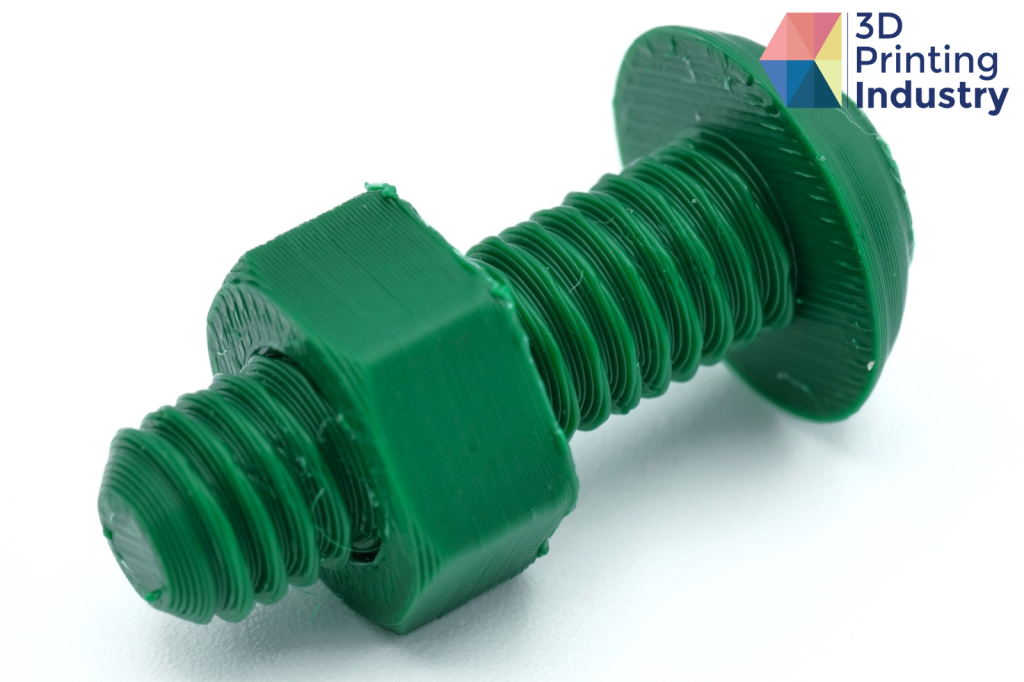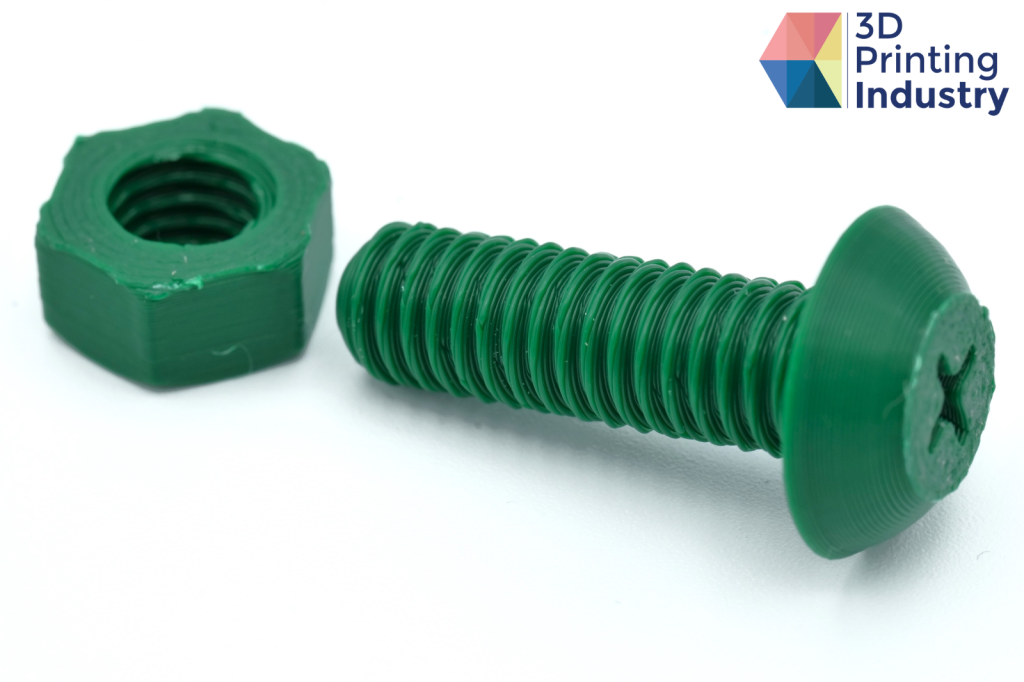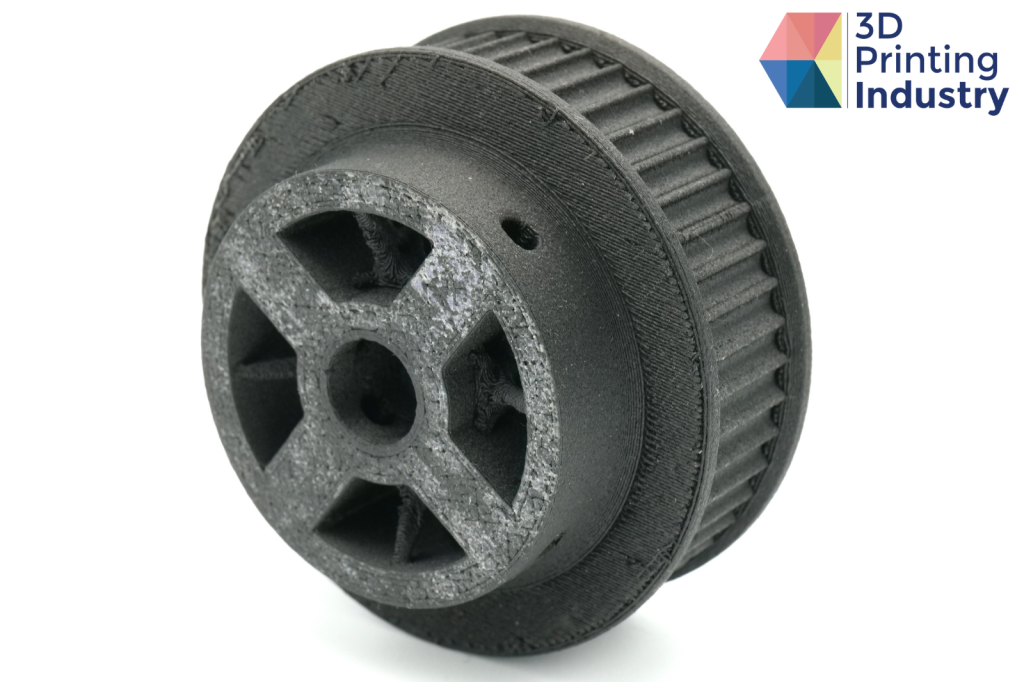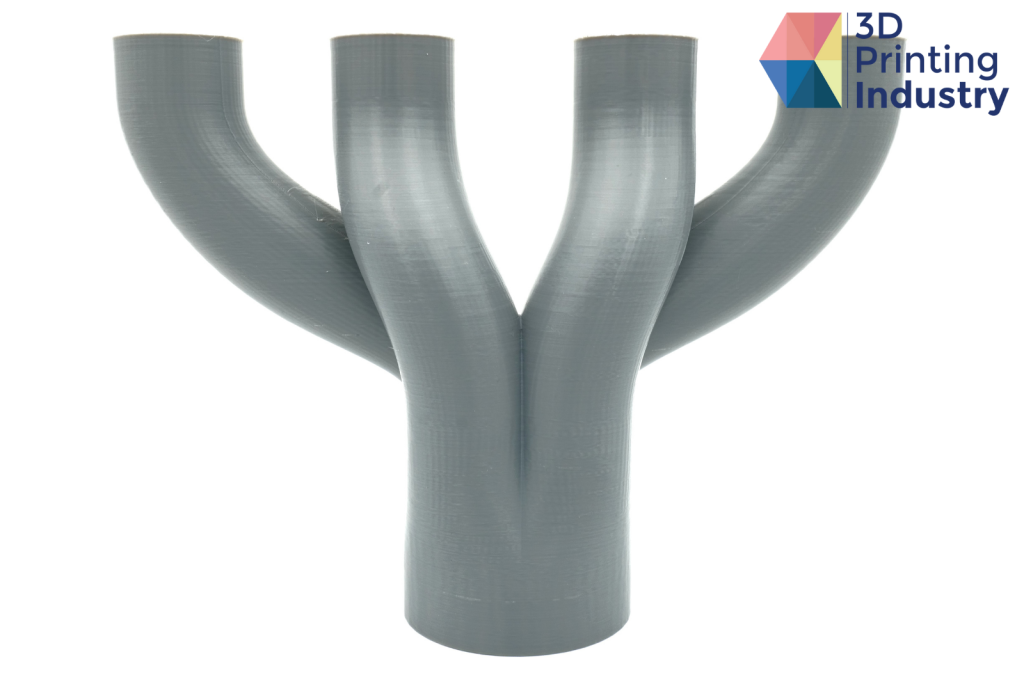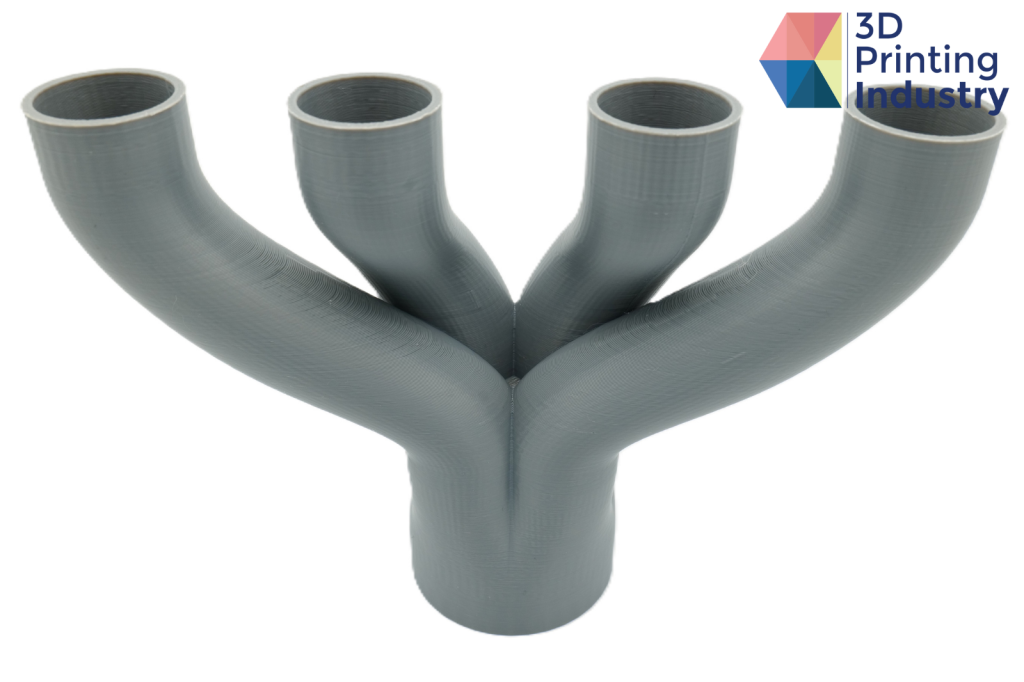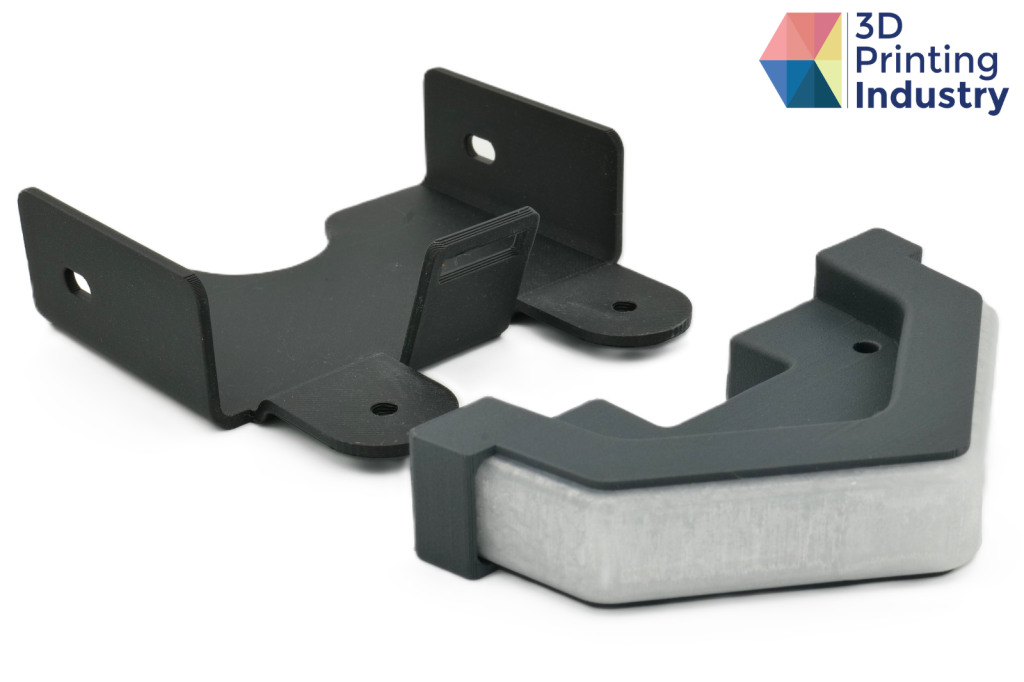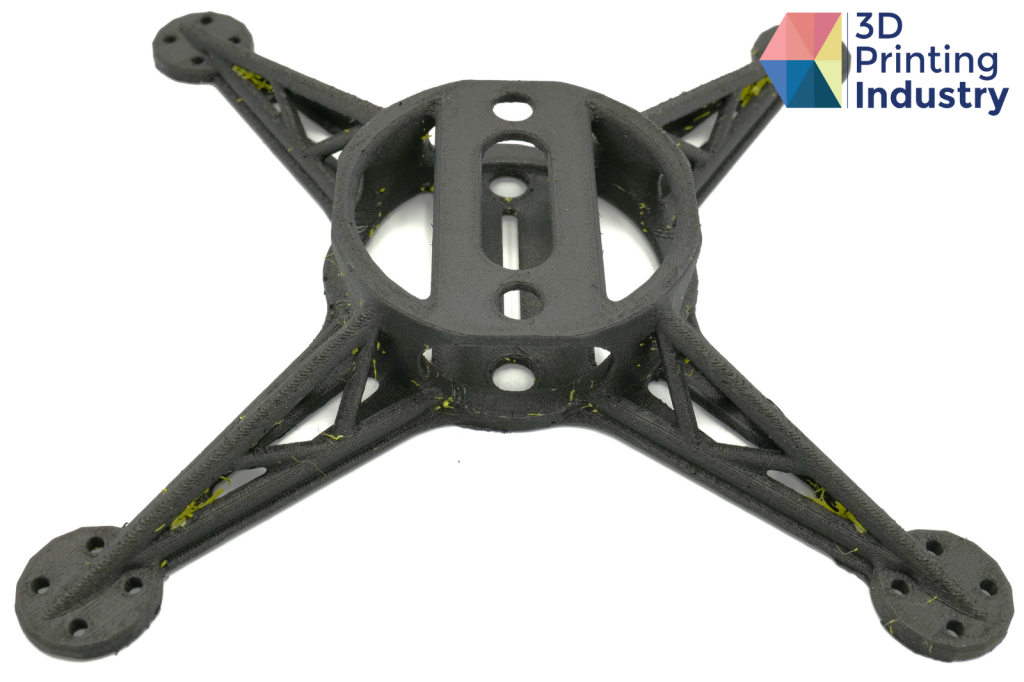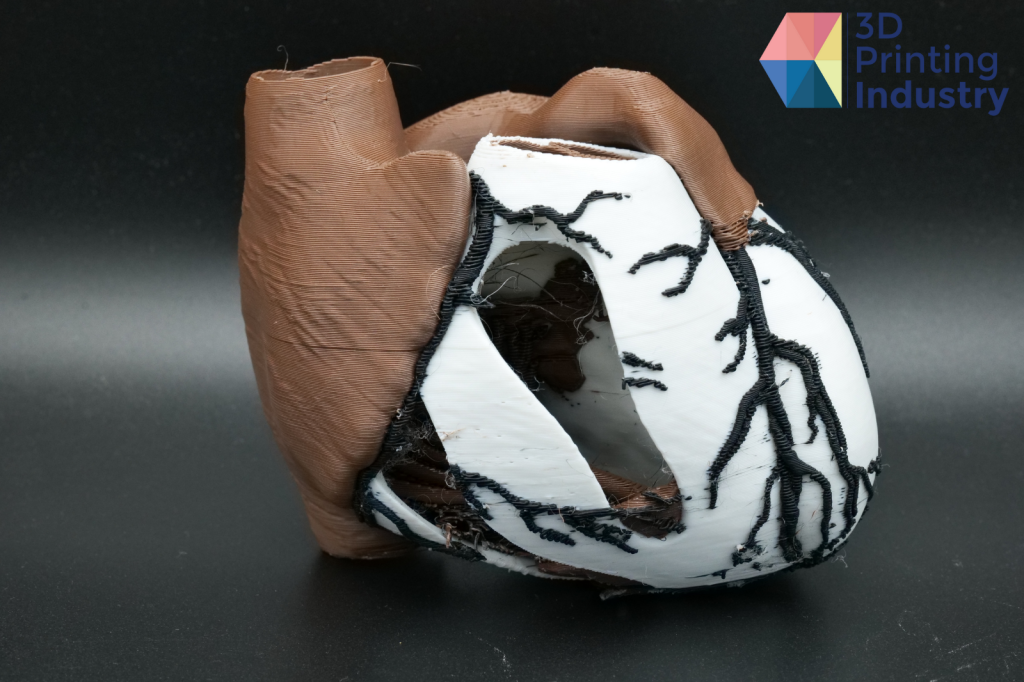The 3D Printing Industry engineering team reviews the Bambu Lab X1E, a desktop 3D printer that has shaken the status quo, set new standards, and perhaps divided the 3D printing community in a way not seen since MakerBot moved away from RepRap.
Fundamentally, the Bambu Lab X1E is an FDM 3D printer featuring enhanced network connectivity and a core-XY configuration tool head. The full package of speed and reliability at an appealing price point has drawn many admirers.
Since arriving on the scene in 2020, Bambu Lab has released several 3D printers, including the X1 Carbon (September 2022), the P1P (November 2022), the P1S (August 2023), the A1 Mini (September 2023) and the X1E in October 2023.
Earlier this year, market intelligence firm CONTEXT highlighted that Bambu Lab is driving the emerging market dominance of entry-level 3D printers. According to its Q4 2023 report, shipments of the company’s desktop systems increased by 3000% in 2023.
However, the Bambu Lab X1E is not without its critics. Significantly, detractors point to network insecurity concerns that potential users should consider.
Read on for our full report and extensive 300+ hour testing of Bambu Lab’s latest addition to the desktop 3D printer market.

Bambu Lab X1E Key Features and Benefits
The Bambu Lab X1E’s features seek to address common complaints about desktop 3D printers and enhance the user experience.
The 3D printer’s fast printhead has a maximum print speed of 500mm/s which, in conjunction with tuned software facilitates the precise declaration necessary to prevent failed prints. Combined, the printhead and software permit 3D printing speeds that greatly reduce the time between 3D prints and increase productivity.
The all-new hot end has a maximum temperature of 320°C, while the actively heated build chamber tolerates up to 60℃. These features broaden the usable material palette and unlock a wide range of applications.
Air filtering comes from a coconut shell granulated H12, G3 air purification filter designed to eliminate toxic fumes from materials that emit caprolactam or styrene. When certain filaments, such as ABS and nylon, are heated during 3D printing, they emit ultrafine particles (UFP) and volatile organic compounds (VOC). These emissions can be harmful and include chemicals known to be carcinogens, irritants, and developmental and reproductive toxins.
The X1E’s heavy-duty air filter minimizes these emissions, making it safe to use the X1E for prolonged periods.
The X1E’s AI failure detection uses a micro-lidar camera. This benefits the user by reducing both material waste and downtime.
Security-minded individuals may be interested to know that the X1E now supports WiFi WPA2 Enterprise Authentication, WLAN/LAN, and Ethernet, increasing connectivity security through encrypted channels. This is ideal for those who wish to perform off-the-cloud printing, for example, in a situation where design files are controlled.
Hardware and Electronics Design and Build Quality
The X1E has a compact, modern, and sleek appearance. Its grey aluminum and glass case measures 389 x 389 x 457 mm. At 16 kg, the printer is an average weight for its size.
The Bambu Lab X1E 3D printer. Photos by 3D Printing Industry.
Two rigid carbon fiber rods support the tool head, ensuring stability through the steel chassis, while the two belt-driven stepper motors provide torque in the core-XY configuration. The heat bed is supported by 3 lead screws which are operated by one larger stepper motor to control the Z-axis gantry.

A well-insulated thick foam interior optimises the actively heated chamber temperature and provides sound absorption to maintain low levels of noise in a work environment.
The X1E’s user interface. Photos by 3D Printing Industry.
A full-colour 5-inch LCD touchscreen on the front of the device allows the users to access important printing information and perform essential actions.
After rigorous testing, the X1E has undergone 300+ hours of printing and is showing no signs of wear, attesting its impressive build quality.
The X1E contains various sensors to inform users of maintenance checks. Scannable barcodes direct users to the Bambu Wiki and informational videos on how to perform necessary repairs or maintenance.
X1E Setup and Calibration
The X1E arrived well packaged containing appropriate plastic sleeves on glass components, with all components being well secured and protected. The unboxing process was intuitive. Within 15 minutes, with the use of Allen keys and a screwdriver, the assembly was complete.
Bambu Lab X1E packaging. Photos by 3D Printing Industry.
A full calibration was required to begin 3D printing. This consisted of the following: Automatic bed levelling, resonance frequency identification (a standard across FDM printers since 2021), Micro lidar calibration and motor noise level calibration. The full process elapses a total time of 25 minutes. This is the average time taken by other desktop 3D printers similar to the X1E.
Bambu Lab X1E calibration interface. Photos by 3D Printing Industry.
The Bambu micro lidar uses two dual red lasers to measure the depth to 7 µm precision of the bed levelling. It also determines the flow rate of extrusion, including first-layer scanning for failure analysis.
Close-up of the Bambu Lab X1E’s toolhead. Photos by 3D Printing Industry.
3D Printing Software and User Interface
Bambu Lab offers its proprietary software, Bambu Studio, which is compatible with all its 3D printers. However, since the X1E reads g-code, it is not limited to receiving g-code data by other slicers when imported using a micro-SD.
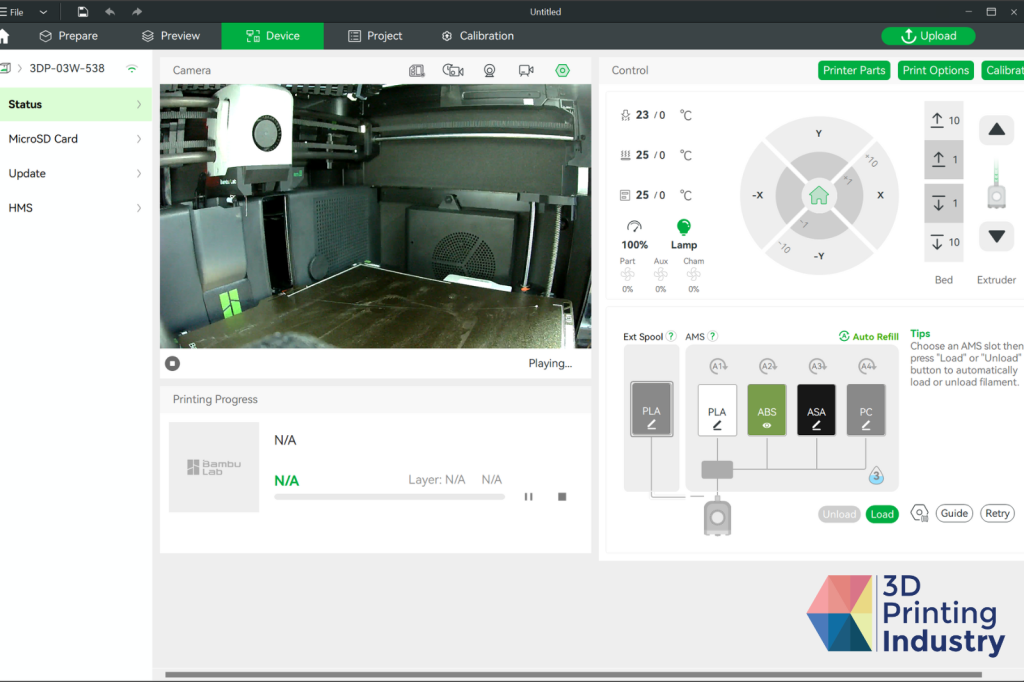
The X1E’s full-colour, 5-inch touchscreen display provides users with various prompts and useful guides. Here, all commands such as load/unload filament, nozzle/chamber/bed temperature, fan/print speed and calibrations can be performed. Access to the build chamber camera can also be found on the device tab.
The Bambu Lab X1E’s user interface commands. Photos by 3D Printing Industry.
Bambu Studio features various useful tools not seen in other slicer software. The multi-colour, multi-material feature allows those in creative artist industries and architecture to achieve a level of design freedom not seen on other desktop systems.
This also enables engineering application components to be printed with support material, reducing overall surface defects when post-processing. The software contains both easy and expert modes, welcoming all levels of user experience.
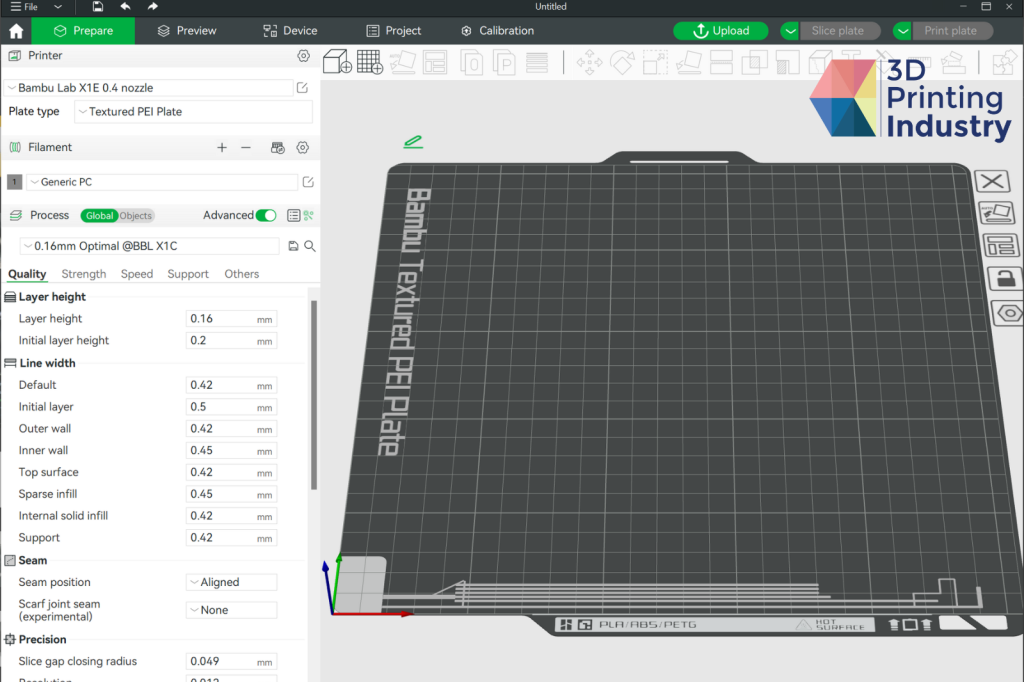
The X1E’s 3D Printing Performance
The X1E contains 4 firmware speed modes which multiply the speed of the motors and are only amendable after starting a print. Silent (50%), Normal (100%), Sport (124%), and Ludicrous (166%) allowing users to fast forward or silence 3D prints at their convenience.
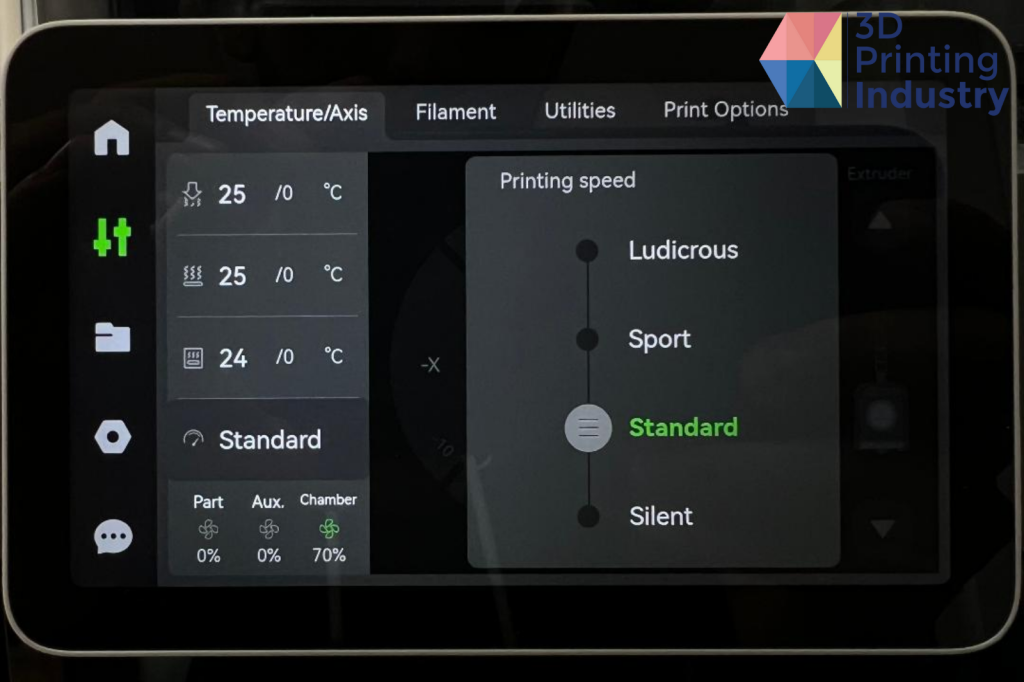
Compared to the general desktop FDM market, the X1E excels in reliability as anomalies are rarely encountered. The X1E is one of the few desktop 3D printers to bring actively heated chambers to the consumer market. However, more entry-level systems are now offering this feature. This reflects a growing trend within the industry toward increasing affordability and accessibility of high-quality 3D printing.
Benchmarking the Bambu Lab X1E
To test the repeatability of the X1E our team 3D printed square, hexagon and tube models 12 times each. These were then measured and compared to their original dimensions. Parts possessing an average deviation under 0.1 mm, and a standard deviation of less than 0.05 mm are viewed as successful results.
3D printed repeatability test geometries. Photos by 3D Printing Industry.
The X1E achieved outstanding results in our repeatability of the tubes, squares and hexagons. The mean difference for all parts was 0.0573mm, with the standard deviation coming in at 0.021mm. These results highlight the impressive consistency between accuracy and precision. As such, the X1E is suitable for professional users who demand the production of repeatable high-quality parts for applications such as jigs and assembly components.
We next conducted our in-house 3DPI test. Here, the X1E scored an outstanding result of 95.85/100. This is the highest score of all FDM 3D printers we have tested.
This was achieved using the optimal mode 0.16mm layer height. Drawbacks were found in the overhand test demonstrating issues after the 70° mark. Most FDM systems produce drooping layer lines at 50°. Therefore, the X1E scores a well above average result.
Our capability tests consist of printing 150 tubes and picking out 16 at random to measure. Capability is vital for users who wish to 3D print large volumes of similar geometries. It is an important factor for the statistical process control of variation. This determines the machine’s suitability to achieve the required tolerances consistently.
Capability test results. Photo and image by 3D Printing Industry.
The X1E showcased a great Cp (Process Capability Index) of 7.99, suggesting a highly capable process output with consistent values within the specification limits compared to its natural variability.
The Cpk (Minimum Process Capability Index) of 3.887 indicates the process is accurately achieving results within the specification limits and has a low probability of producing defects outside of this range. Overall, the X1E is well suited to mass production operations, offering high quality and consistency.
We also assessed the X1E’s ability to 3D print small and precise parts. The test piece was a small nut and bolt with tight tolerances containing a length of 28 mm. This part was 3D printed successfully with good detail and no defects in the thread, allowing it to function as intended. Therefore, the X1E is suitable for producing jigs in the automotive and aerospace sectors.
3D printed nut and bolt test. Photos by 3D Printing Industry.
Testing Bambu Lab X1E Applications
Using PA6-CF we printed a lattice pulley found in RC skateboards. This was a high-quality print, with no defects identifiable or post-processing required.
3D printed lattice pulley cog. Photos by 3D Printing Industry.
Using ASA, which has a glass transitioning temperature of 110℃, we were able to 3D print an intake connecting pipe for a rally car. The intake contained no warps or external defects, making it suitable for application use in the automotive sector.
3D printed four-to-one intake. Photos by 3D Printing Industry.
A functional prototype of tail light components was also 3D printed. The lens was made from clear polycarbonate, allowing light to pass through whilst acting as a diffusor. ABS was used for the casing to prevent any wear from environmental factors. A bracket was 3D printed in PLA to represent sheet metal.
3D printed tail light prototype. Photos by 3D Printing Industry.
Using PAHT-CF, we next 3D printed a drone frame. This required the use of Bambu Labs support material. We encountered some issues here. Fortunately, the customer support team were fast to respond, typically taking between 24 to 48 hours to provide helpful links to information and tutorials. Although it was not so easy to remove the support material, using the appropriate tools and patience we were successful.
3D printed drone frame. Photos by 3D Printing Industry.
One of the most intriguing features of hobbyists in the FDM market is the multi-colour 3D printing tool selectable in Bambu Studio. The Automatic Material System (AMS) allows users to store 4 spools in its compartment. This can read the RFID chip and automatically load the filament into the tool head.
Our 3D printed company logos and Hue Forge artwork demonstrate how well-suited this tool is to the arts and crafts market, producing multi-colour parts in single 3D print jobs.
We also produced a high-quality anatomic model of a heart suitable for educational and demonstration purposes. The bio-medical industry could benefit from the X1E for evaluating life-size 3D-printed anatomical models for orthopaedic oncology found in CT or MRI imaging. This allows medical practitioners to study the best process for surgeries.
Multi-coloured 3D prints. Photos by 3D Printing Industry.
Bambu Lab Faces Data Insecurity Accusations
According to some sources, Bambu Lab log files transferred to the cloud contain intellectual property such as 3mf files and g-code. This appears to be an issue encountered with the previous firmware which lacked security protocols, making it vulnerable to external interception which can be decrypted.
Since Bambu Studio and Bambu devices depend heavily on their cloud services, data breaches or unauthorized access could cause immense disruptions or leaks of proprietary designs.
The data collected by Bambu Lab devices includes video streams and detailed print information, which are picked up by the onboard camera and micro-lidar. These data could potentially be accessed if the system is breached. This is a major concern for the defense sector, which handles incredibly sensitive data.
What’s more, in 2023 all Bambu Lab 3D printers connected to the cloud and spontaneously began 3D printing, damaging many devices. This was reportedly caused by a glitch in the cloud service following a system reset by Bambu, causing 3D printers to re-print the last print job.
With reports of decrypted log files containing intellectual property being collected by the Bambu Cloud, Bambu has dedicated the X1E to ensuring network and user security.
The 3D printer’s new ethernet port allows the X1E to operate without connecting to the cloud. The X1E also offers WPA2 enterprise-authenticated connectivity for secure network use and offline printing capabilities, making it well-suited to those 3D printing under NDA.
The X1E: A Value for Money Desktop 3D Printer
The X1E is only sold by resellers and is listed at £1915 – £2088 excluding VAT. The Automatic Material System (AMS) is included in this price.
This is practically double the price of its predecessor, the X1C, which costs £969. The Creality K2 is a direct competitor against the X1E. It is priced at just £1190 and offers similar features, except enhanced connectivity and a heavy-duty air filter. The Ultimaker S5 is another contender in terms of hardware. However, this system features a much more expensive price point of £10,000.
Overall, we believe the X1E is an excellent value-for-money 3D printer. It offers attractive features to enable high-quality 3D printing and is compatible with a range of materials suitable for various applications.
Customers can expect to spend between £2300 and £2600 for the X1E when including consumables such as desiccants, materials and build plates.
The Bambu Lab X1E: A New Standard in the Desktop 3D Printer Market
The X1E excelled in all our dimensional tests, achieving outstanding results. Designed for the professional market. The 3D printer represents a significant advancement in desktop 3D printing technology, integrating high-speed printing capabilities with impressive build quality.
The improved hotend and actively heated build chamber greatly increases the versatility of materials. As such, the X1E is well suited to a wider range of professional use applications across many sectors.
Although Bambu Lab has stepped up the cloud service security measures by introducing additional security protocols, data security should still be considered by prospective customers. Users should also perform monthly maintenance checks on the X1E to avoid downtime and inconvenience. This can be done by greasing lead screws, clearing grime and taking caution when removing the nozzle to avoid damage to wires.
Despite its numerous strengths, the X1E is not without drawbacks. Nozzle clogs were sometimes encountered but were easily rectified thanks to the magnetic tool head cover and the two screws which hold the nozzle in place. Disassembly of components is quick and easy to perform with minimal effort. Bed adhesion problems were also encountered but rectified using the glue stick provided in the accessories box.
These slight issues are outweighed by the 3D printer’s numerous benefits, including excellent print quality, speed, and a comprehensive support ecosystem.
Tons of support is provided in Bambu Wiki, which uses a forum-type format where the community and experts can comment and reply to posted problems. All consumables or spare parts can be found in the Bambu lab store.
In summary, the Bambu Lab X1E is a highly capable and reliable 3D printer that delivers exceptional performance and user experience. This makes it a worthy investment for both hobbyists and professionals in need of precise and consistent 3D printing.
Technical Specifications of the Bambu Lab X1E
| 3D Printing Technology | FDM (Fused Deposition Modeling) |
| Build Volume | 256 x 256 x 256 mm |
| 3D Printer Dimensions | 389 x 389 x 457 mm³ |
| User Interface | Touch screen 5-inch |
| Maximum 3D Print Speed | 500 mm/s |
| 3D Print Acceleration | 20 m/s² |
| Maximum Flow Rate | 32 mm3/s |
| Maximum Nozzle Temperature | 320℃ |
| Heated Build Plate Temperature | 110℃@220V, 120℃@110V |
| Heated Build Chamber | Max 60℃ |
| Pre-filter grade | G3 |
| HEPA filter grade | H12 |
| Activated Carbon Filter type | Coconut Shell Granulated |
| Advertised Filament Compatibility | PLA, PETG, TPU, PVA, BVOH: Optimal ABS, ASA, PC, PA, PET: Superior Carbon/Glass Fiber Reinforced PLA, PETG, PA, PET, PC, ABS, ASA: Superior PPA-CF/GF, PPS, PPS-CF/GF |
| Nozzle and Extruder Gear Material | Hardened steel |
| Nozzle Diameter | 0.4 mm (Included)0.2mm, 0.6mm, 0.8mm |
| Filament Diameter | 1.75 mm |
| Extruder Quantity | 1 |
| Filament Cutter | Yes |
| Hotend | All Metal Hotend |
| Net weight | 16kg |
| Slicer Compatibility | Bambu Studio |
| Connectivity | WiFi, Ethernet RJ45, WPA2 |
| File Output | .gcode |
Want to help select the winners of the 2024 3D Printing Industry Awards? Join the Expert Committee today.
What does the future of 3D printing hold?
What near-term 3D printing trends have been highlighted by industry experts?
Subscribe to the 3D Printing Industry newsletter to keep up to date with the latest 3D printing news.
You can also follow us on Twitter, like our Facebook page, and subscribe to the 3D Printing Industry Youtube channel to access more exclusive content.
Featured image shows the Bambu Lab X1E. Photo by 3D Printing Industry.



